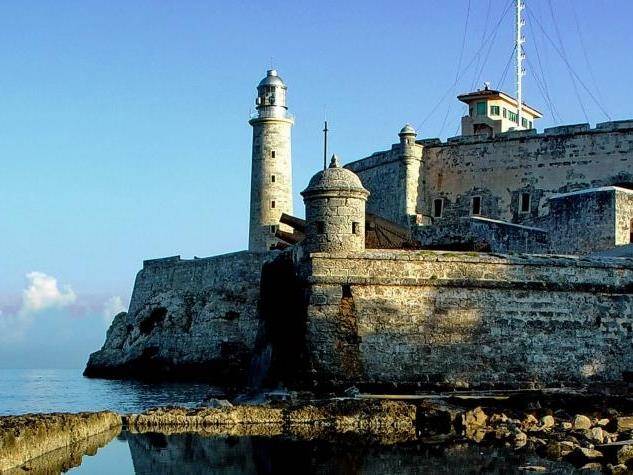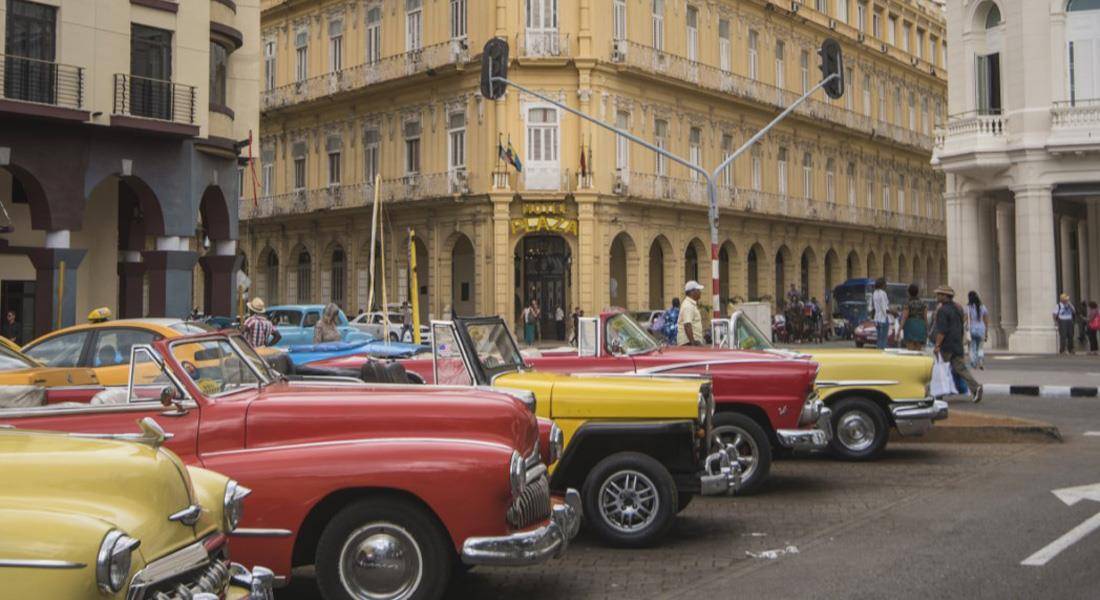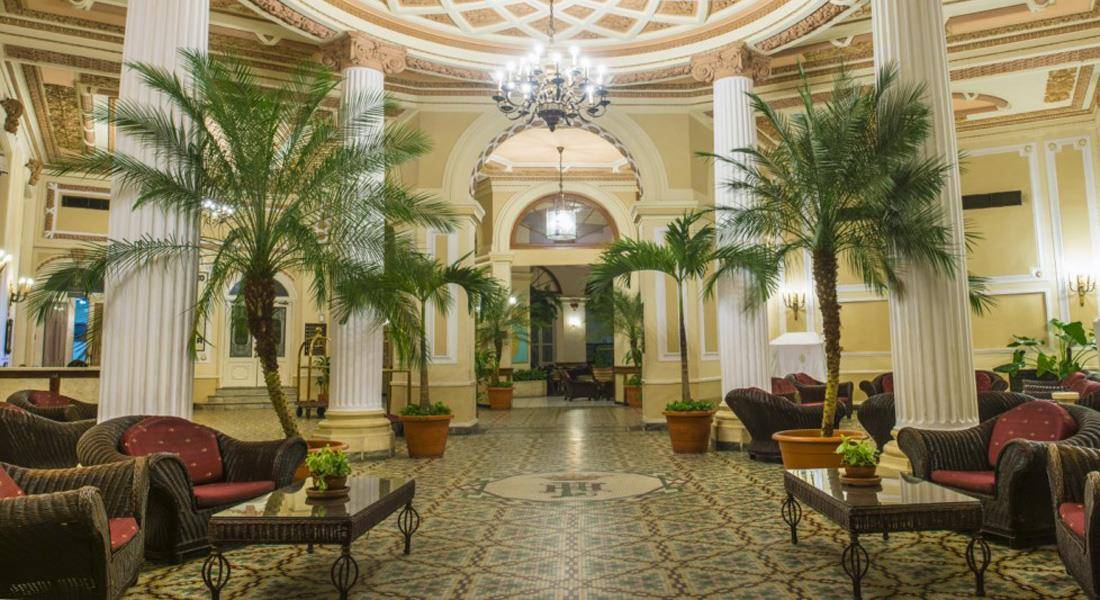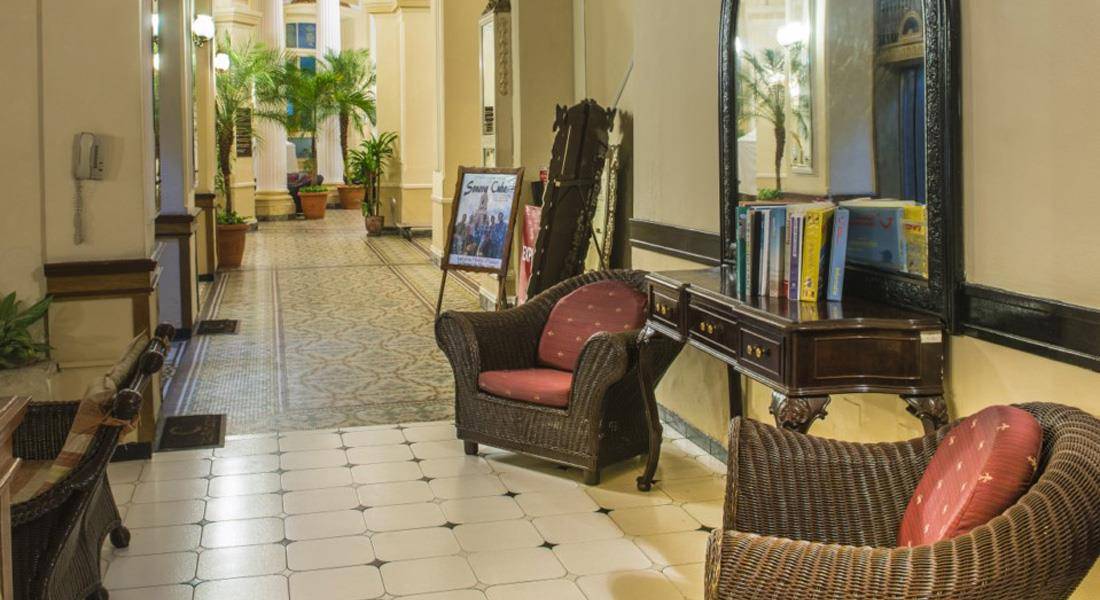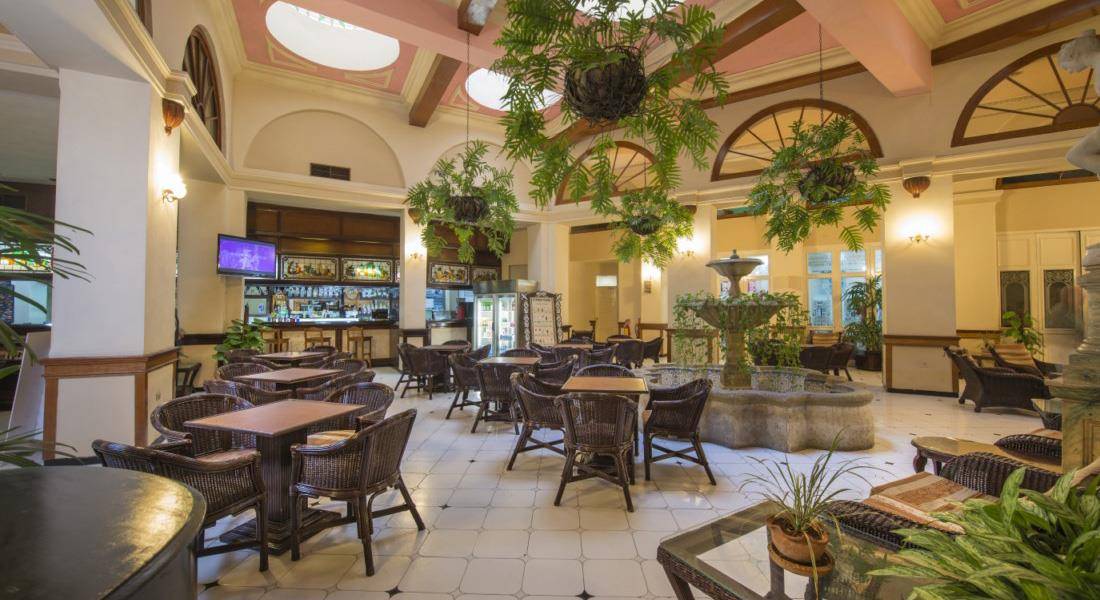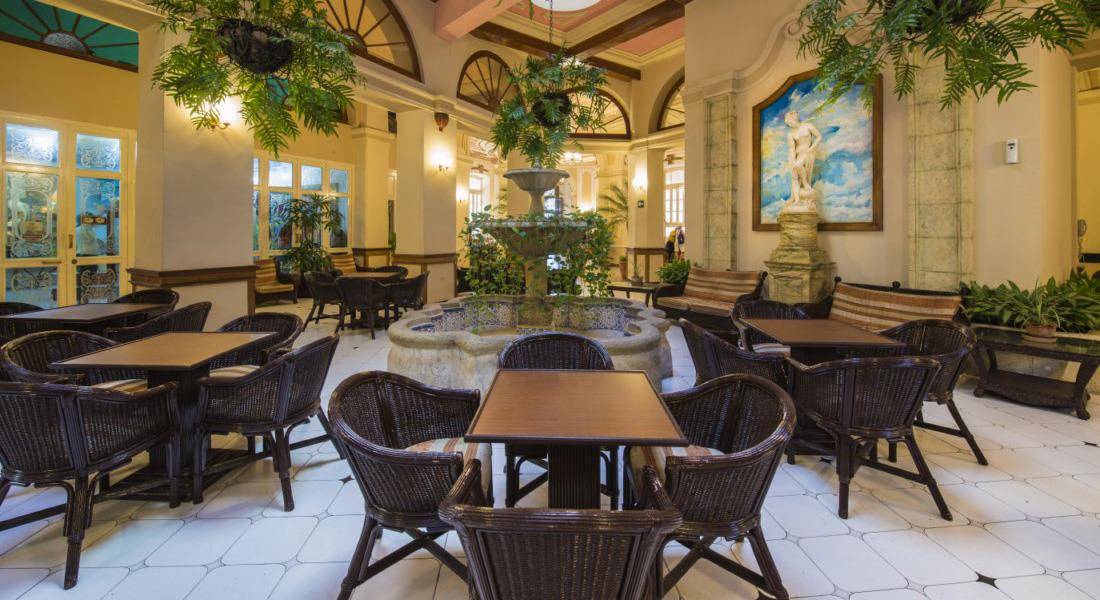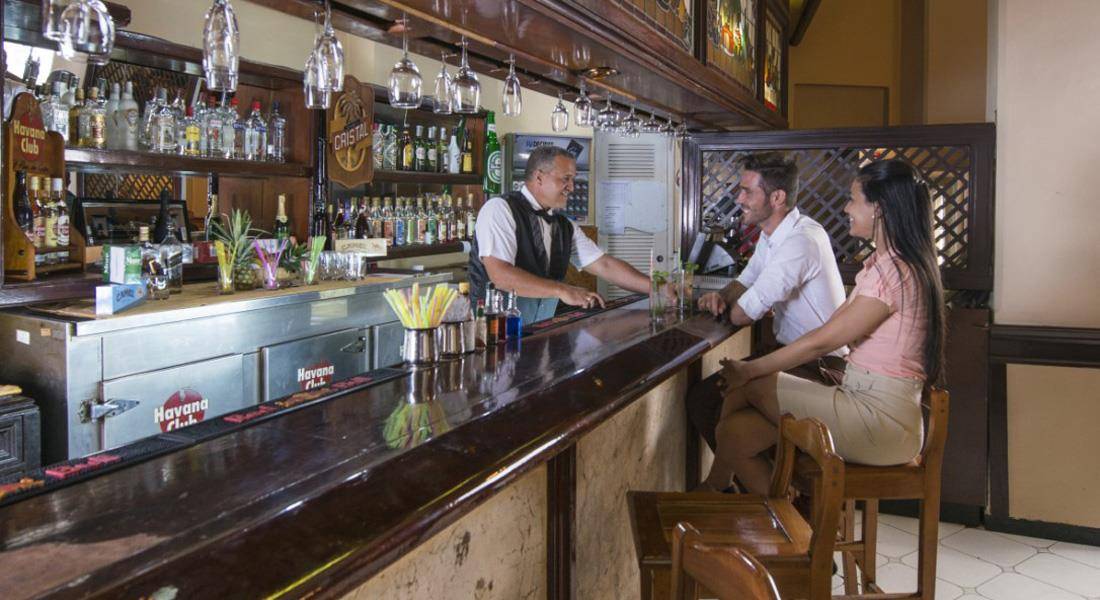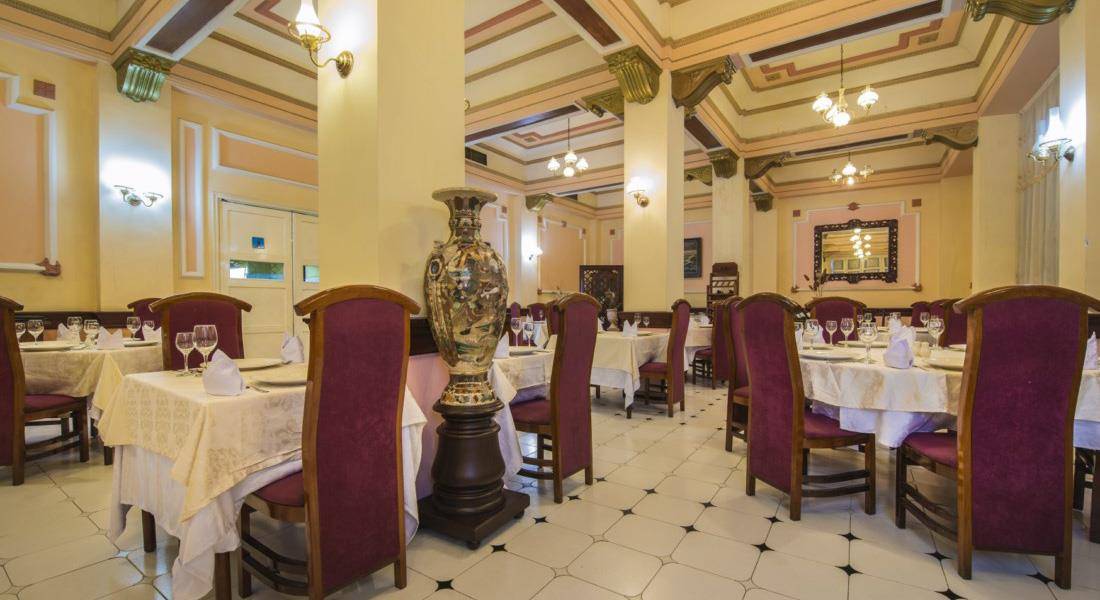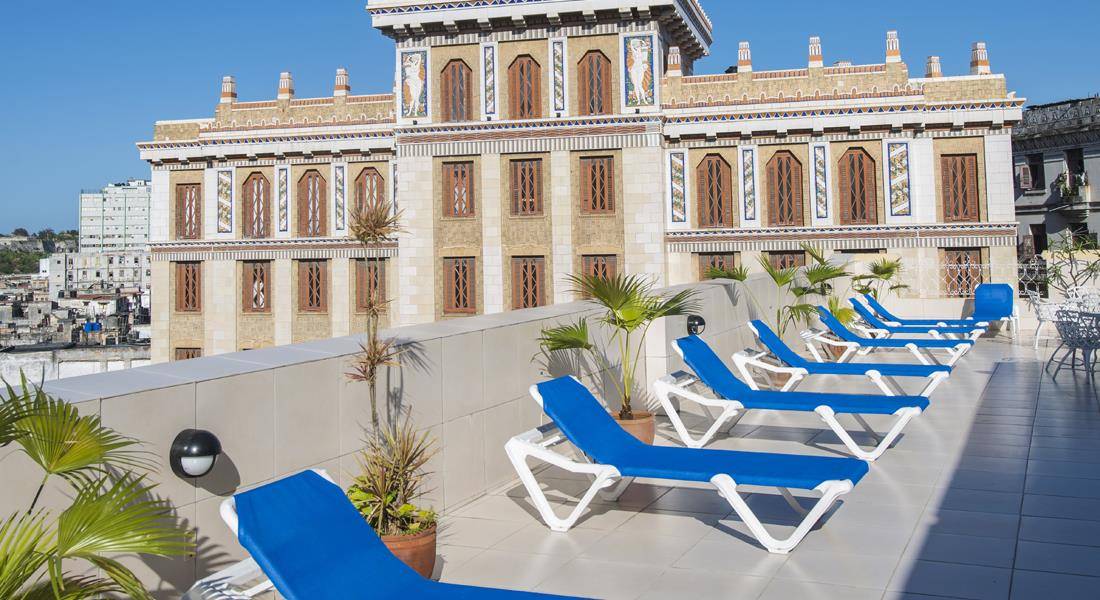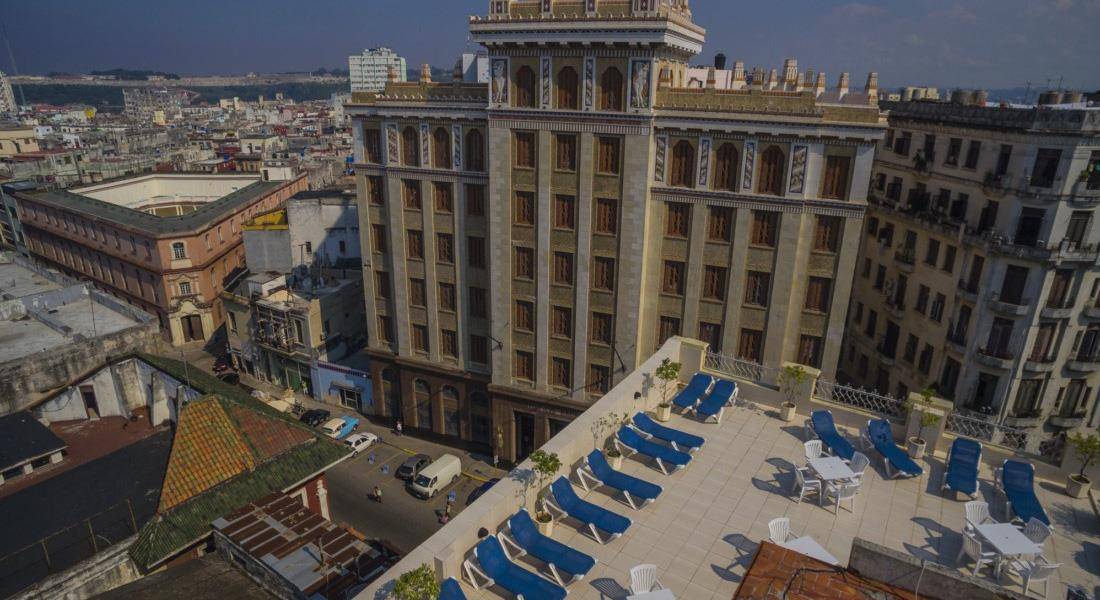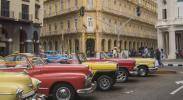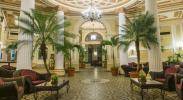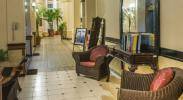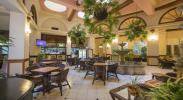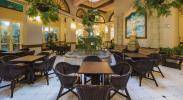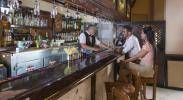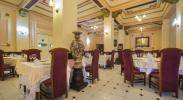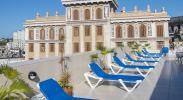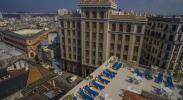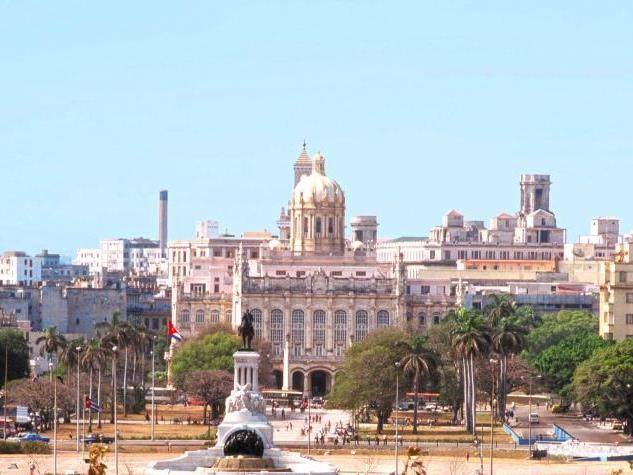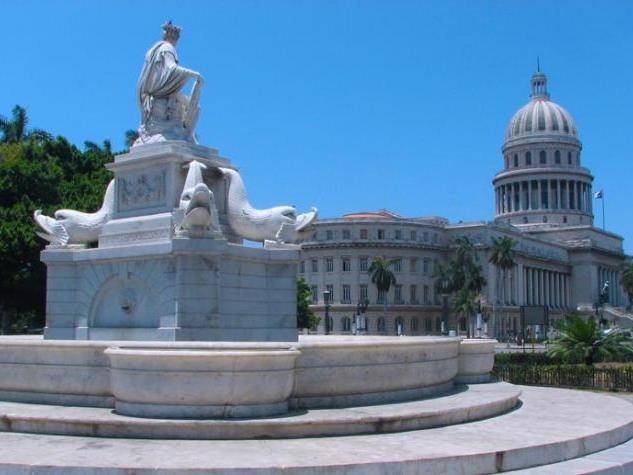About
Plaza
Designed over 100 years ago, Hotel Plaza has a peculiar conical triangle shape, adding to its allure. Early 20th century elements are still reflected in details such as the (partial) original floor in the lobby and the towering windows, sandblasted with the Hotel Plaza’s emblem.
The lobby and nearby bar are lively and abuzz, the soundtrack provided by inspired travelers, the bubbling fountain, and chirping (caged) birds. Stained glass domes in the ceiling - with beautiful Art Nouveau images - filter the sunlight.
The Hotel Plaza has three restaurants and three bars, including Fausto, the buffet restaurant and bar on the fifth floor. This is also where the Plaza’s rooftop terrace is located, which provides expansive city views (not unlike those provided by similar terraces of nearby hotels Parque Central and Inglaterra). Any of these spots provide good respite from Havana’s bustle, and make for a nice place to recharge before heading out for more sightseeing.
Hotel Plaza radiates faded grandeur. Imagine the likes of Albert Einstein and Babe Ruth (both past guests here), walking the halls. Today, the Plaza is an affordable option at a prime location.
